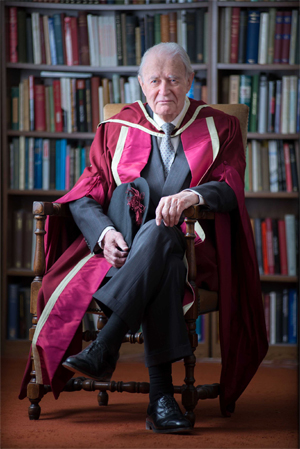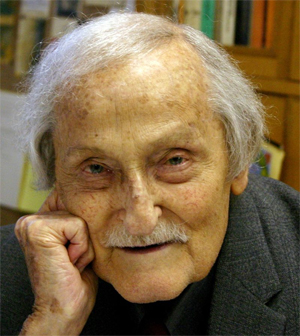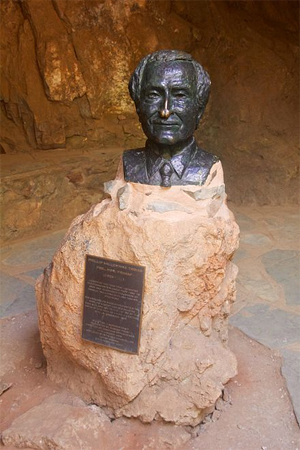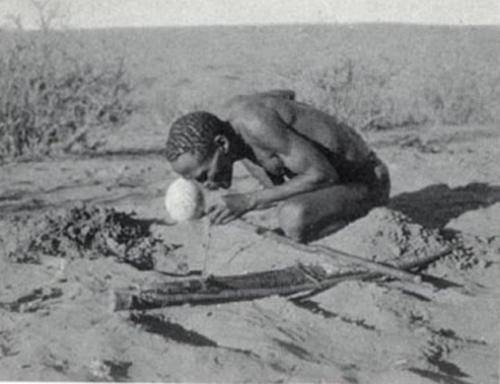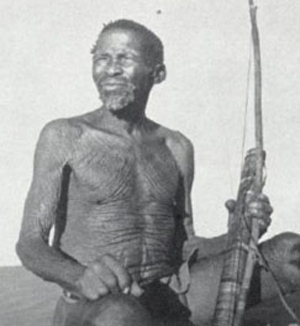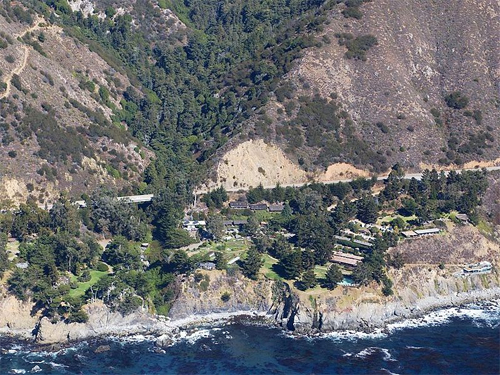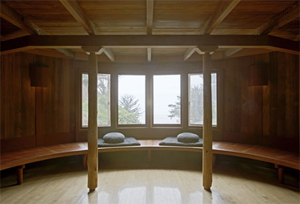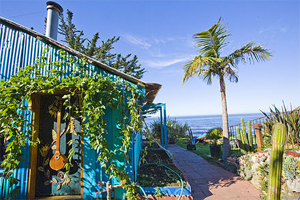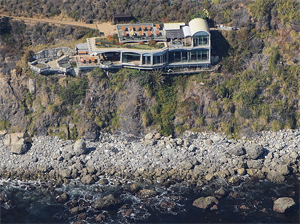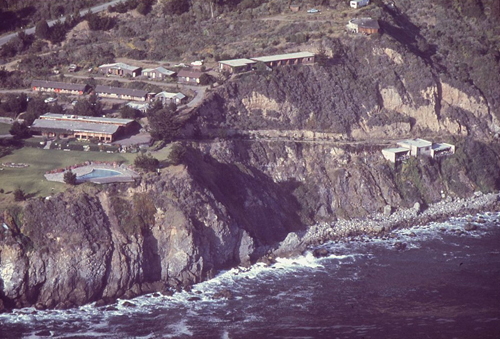by Wikipedia
Accessed: 6/25/20
The Order of St. Lazarus & Jesse Helms:
Jesse Helms is also linked with the Knights of the Military and Hospitaller Order of St. Lazarus of Jerusalem, which was founded in Britain by Robert Gayre (publisher of the racialist Mankind Quarterly before Roger Pearson). The Order of St. Lazarus was also established in the U.S. by Lord Malcolm Douglas of the Cliveden Set:"In the 1960s, a Briton named Robert Gayre had succeeded in founding a branch of the Order [of St. Lazarus] in Great Britain, accepting many non-Catholics as members. (The same Robert Gayre was involved...when an International Commission on Orders of Chivalry was created, with the main purpose of providing legitimacy to the Order of Saint Lazarus.) The duke of Nemours decided to open the order to them, but this led to another split, and Nemours was himself deposed and replaced by the duc de Brissac who, in 1980, abandoned the denomination of 'Order' and gave the association new statutes, calling it simply 'Hospitallers of Saint Lazarus'" 59.
"[Lady Malcolm] Douglas Hamilton is related to a British family that supported Hitler's war aims. When she and her husband came to the U.S., he helped establish a branch of the Military and Hospitaller Order of St. Lazarus of Jerusalem, an obscure racist-led network based in Scotland and tied to Jesse Helms." 60.
Scholars examining the relationship between right-wing politics and racial research have drawn on a 1979 work by social psychologist Michael Billig, Psychology, Racism, and Fascism, which argues that the origins of racist and neo-Nazi movements of the 1950s to 1970s are to be found in British social science. Robert Gayre's Mankind Quarterly is based in Edinburgh, Scotland, the location of the Order of St. Lazarus:"Since it was established in 1960, The Mankind Quarterly has had the same overall editor -- Professor R. Gayre, M.A., D.Phil., Pol.D.Sc., D.Sc., a physical anthropologist trained at Edinburgh University. He was formerly Professor of Anthropology at the University of Saugor in India, but now is resident at Edinburgh, where The Mankind Quarterly is published ...Gayre's contacts with British fascists came to light when five members of the Racial Preservation Society were prosecuted in 1968 at Lewes under the Race Relations Act for publishing racialist material. At the time of the offence the Racial Preservation Society was an independent body, but by the time of the trial it had officially merged into the National Front." 61.
It was not by coincidence that the cloning of Dolly the sheep occurred at the Roslyn Institute in Roslyn, Scotland located 7 miles south of Edinburgh. Situated directly between Roslyn Institute and Edinburgh is Roslyn Chapel, the famous shrine of the Knights Templar that is geometrically designed as a copy of the ruins of Herod's Temple. Near Roslyn Chapel is the home of the St Clair or Sinclair family 62., which have historically been revered as prominent Freemasons of Britain and a sacred family of the Merovingian bloodline. The esoteric interpretation of Dolly compares the white sheep to Christ, whose divine and immortal state the racial eugenicists hope to duplicate through biotechnology. According to news reports, the cloning of the first human embryo occurred in 1999 on June 24, which is the Masonic feast of St. John the Baptist, patron saint of Freemasonry. 63.
-- The Council for National Policy, by Barbara Aho
Students of Anthroposophy are well aware that Rudolf Steiner taught that Lazarus and John were the same individual and that he has incarnated continually throughout history. One of the most significant of his incarnations occurred when John incarnated as Christian Rosenkreutz in the 14th century.
-- Uncovering the Secret of “THE M”: The Adept Behind the Western Tradition, by Richard Cloud
Before Christ provided an example though his own resurrection, he had already awakened many others -- such as Lazarus. Roll away the "Sodomite stone," that is the command of the Savior, by which he helps Lazarus "rise." In the "Awakening of Drusianas and Calimachus" of Roswitha von Gandersheim a serpentine monster escapes from the burial chamber. John banishes the serpent. Among the Egyptians the ape was the god of the dead. Driving out the Devil is therefore literally and actually to be understood as the driving out of sex-apes. Thus Jesus chases seven sex-demons away from Mary Magdalene (Lk. VIII.2). The apostles did similar things on their missions. Because they took away the greatest sensual pleasures from men and women the bitter feelings of the Sodomite Greeks, Romans and occidental peoples, and the persecutions which came as a result of these feelings, can be understood. If the Sodomite grave was a trap for many, the burial of Jesus was glorious. (Is. IX. 10). Jesus did not remain among the mob of Sodomite monsters, he overpowered the Sodomite grave-stones, the Sodomite guards, he hurled the Sodomite linens away. It is noteworthy that after his resurrection Magdalene could consider Jesus to be Kepoyros = Priapus. This event again proves that Christ also had the external appearance of an archanthropos. Tertullian (de resurr. carnis VI) also says that the heavenly man in Gen. I.26 is man made according to the model of Christ. "Rise, Lord ... you have smashed the teeth of the resha'im" (Ps. III.8). Obviously monsters with their fangs are meant here...
The time has come! The old Sodomite brood in the Middle East and all around the Mediterranean is degenerate and wretched, the one-time Paradisiacal fields are completely exploited and plundered like a wheat-field in which a thievish hoard of apes has taken up residence. Our bodies are infected with a mange which despite every kind of soap remains udumu-ized, pagutu-ized and baziat-ized. Never has human life been as miserable as it is today -- despite all its technical advancements. Devilish human beasts oppress us from above, slaughtering millions of people in unconscionably murderous wars conducted for the enrichment of their personal money-bags. Savage human beasts undermine the pillars of culture from below. Mankind is putrid like Lazarus and already exudes the stink of Sodomite death. What do you want with Hell in the Beyond?! Isn't the one we are living in now, and in which we are now burning, terrible enough? A time has once more come when Creation anxiously awaits the arrival of a God-man (Rom. VIII.10).
-- Theozoology, or the Science of the Sodomite Apelings and the Divine Electron, by Dr. Jorg Lanz von Liebenfels
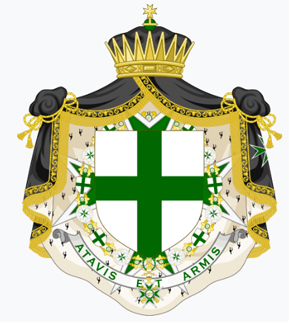
Order of Saint Lazarus of Jerusalem
Successor Order of Saints Maurice and Lazarus (Italian branch, since 1572)
Formation: Circa 1098/1119
Extinction: 1572/1830
Type: Military order
Purpose: Nursing
Membership: Catholic
Official language: Latin
Patron Saint: Saint Lazarus
Parent organization: Catholic Church
Affiliations: House of Savoy (1572); House of Bourbon (1609–1824/1830)
Website saintlazarus.org
The Order of Saint Lazarus of Jerusalem, also known as the Leper Brothers of Jerusalem or simply as Lazarists, was a Catholic military order founded by crusaders around 1119 at a leper hospital in Jerusalem, Kingdom of Jerusalem, whose care became its original purpose, named after their patron saint, Lazarus.[1][2][3]
Luke 16:19–31, New International Version:
"There was a rich man who was dressed in purple and fine linen and lived in luxury every day. At his gate was laid a beggar named Lazarus, covered with sores and longing to eat what fell from the rich man’s table. Even the dogs came and licked his sores.
"The time came when the beggar died and the angels carried him to Abraham's side. The rich man also died and was buried. In Hades, where he was in torment, he looked up and saw Abraham far away, with Lazarus by his side. So he called to him, 'Father Abraham, have pity on me and send Lazarus to dip the tip of his finger in water and cool my tongue, because I am in agony in this fire.'
"But Abraham replied, 'Son, remember that in your lifetime you received your good things, while Lazarus received bad things, but now he is comforted here and you are in agony. 26And besides all this, between us and you a great chasm has been set in place, so that those who want to go from here to you cannot, nor can anyone cross over from there to us.'
"He answered, 'Then I beg you, father, send Lazarus to my family, 28for I have five brothers. Let him warn them, so that they will not also come to this place of torment.'
Abraham replied, 'They have Moses and the Prophets; let them listen to them.'
"'No, father Abraham,' he said, 'but if someone from the dead goes to them, they will repent.'
"He said to him, 'If they do not listen to Moses and the Prophets, they will not be convinced even if someone rises from the dead.'"
-- Rich man and Lazarus, by Wikipedia
It was recognised by King Fulk of Jerusalem in 1142 and canonically recognised as a hospitaller and military order of chivalry under the rule of Saint Augustine in the Papal bull Cum a Nobis Petitur of Pope Alexander IV in 1255. Although they were centered on their charism of caring for those afflicted with leprosy, the knights of the Order of Saint Lazarus notably fought in the Battle of La Forbie in 1244 and in the Defense of Acre in 1291.[4] The titular seat was successively situated at Jerusalem, Saint-Jean-d'Acre and - after the fall of the Kingdom of Jerusalem - split in two main branches in Italy and in Château Royal de Boigny-sur-Bionne in France.[5]
In 1489, Pope Innocent VIII attempted to merge the order and its land holdings with the Sovereign Military Order of Malta. This was resisted by the larger part of the jurisdictions of the Order of Saint Lazarus including those in France, Southern Italy, Hungary, Switzerland, and England. The Order of Malta only managed to appropriate the Lazarus holdings in Germany.
In 1572, the Order of Saint Lazarus in Italy was merged with the Order of Saint Maurice under the Royal House of Savoy to form the Order of Saints Maurice and Lazarus, which still exists until today, widely recognised as a dynastic successor of the Italian branch.[6] This merger however excluded the holding in the southern part of Italy, then forming part of the Spanish realm. These were transformed into ecclesiastical benefices. The Duke of Savoy only managed to gain control of those benefices sited in the duchy of Savoy.
In 1608, King Henry IV of France, with the approval of the Holy See, linked the French section administratively to the Order of Our Lady of Mount Carmel to form the Royal Military and Hospitaller Order of Our Lady of Mount Carmel and Saint Lazarus of Jerusalem united. This branch became closely linked to the Royal Crown during the 18th century with the serving grand masters then being members of the Royal family. It suffered the consequences of the French Revolution, and went into exile along with its grand master Louis-Stanislas-Xavier, Comte (count) de Provence, king-in-exile Louis XVIII. It formally lost its Royal protection in 1830 and then ceased to remain listed as of royal protection in the French Royal Almanac.[7][8][9]
The word lazarette, in some languages being synonymous with leprosarum, is believed to also be derived from the hospitaller Order of Saint Lazarus, these edifices being adopted into quarantine stations in the fifteenth century when leprosy was no longer the scourge it had been in earlier centuries.[10]
History
Crusades
The military order of Saint Lazarus of Jerusalem originated in a leper hospital founded in the twelfth century by crusaders of the Latin Kingdom. There had been earlier leper hospitals in the East, of which the Knights of St. Lazarus claimed to be the continuation, in order to have the appearance of remote antiquity and to pass as the oldest of all orders. According to Charles Moeller, "this pretension is apocryphal";[11] but documentary evidence does confirm that the edifice was a functioning concern in 1073.[12]
The Order of St. Lazarus was purely an order of hospitallers in the beginning, and adopted the hospital Rule of St. Augustine in use in the West. The Order assumed a military role in the 12th century.[4] The Lazarists wore a green cross upon their mantle.[13][14]
Hospitals dependent on the Jerusalem leprosarium were eventually established in other towns in the Holy Land, notably in Acre, and in various countries in Europe particularly in Southern Italy (Capua), Hungary, Switzerland, France (Boigny), and England (Burton Lazars).[15] Louis VII of France, on his return from the Second Crusade, gave it the Château of Broigny, near Orléans in 1154. This example was followed by Henry II of England, and by Emperor Frederick II.[11]
In 1154, King Louis VII of France gave the Order of Saint Lazarus a property at Boigny near Orléans which was to become the headquarters of the order outside of the Holy Land. Later, after the fall of Acre in 1291 the Knights of St. Lazarus left the Holy Land and moved first to Cyprus, then Sicily and finally back to Boigny, which had been raised to a barony in 1288.
The Order remained primarily a hospitaller order but did take part in a number of battles. After the fall of Jerusalem in July 1244 and the subsequent Battle of La Forbie the following October, the Order of St. Lazarus, although still called "of Jerusalem", transferred to Acre, where it had been ceded territory by the Templars in 1240. The Ordinis Fratrum & Militum Hospitalis Leprosorum S. Lazari Hierosolymitani under Augustinian Rule was confirmed by Papal Bull Cum a Nobis Petitur of Pope Alexander IV in April 1255. In 1262 Pope Urban IV assured it the same immunities as were granted to the monastic orders.
Late medieval period
The order quickly abandoned their military activities after the fall of Acre in 1291.[15] As a result of this catastrophe the leper hospital of St. Lazarus of Jerusalem disappeared; however, its commanderies in Europe, together with their revenues, continued to exist. In 1308 King Philip IV of France gave the order his temporal protection.[citation needed]
In 1490, Pope Innocent VIII attempted to amalgamate the order and transfer its possessions to the Knights of St. John. Although this was confirmed in 1505 by Pope Julius II, the Order of Saint Lazarus resisted this move and the order of St. John never came into possession of this property except in Germany. In France, the Bull of suppression was ignored and French Grand Masters appointed.[citation needed] The order of Saint John claimed the possession of the French holdings but their claim was legally rejected in 1547 by the Parliament of Paris.
In 1565 Pope Pius IV annulled the Bulls of his predecessors and restored all possessions to the order so that he might give the grand magistry to a favorite, Giovanni de Castiglione. But the latter did not succeed in securing the devolution of the commanderies in France. By the end of the 16th century, the order had retained a significant presence only in France and in Italy.
Continuations after 1572
Royal House of Savoy
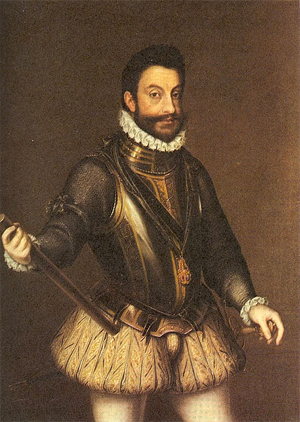
Emmanuel Philibert, Duke of Savoy (1528–1580), founder and first Grand Master of the amalgamated Order of Saints Maurice and Lazarus, recognised in 1572 by Pope Gregory XIII.
Main article: Order of Saints Maurice and Lazarus
With the death of the papal favorite, Castiglione, in 1572, the grand magistry of the order was rendered vacant and Pope Gregory XIII united the Italian branch with the Order of Saint Maurice to set up the Order of Saints Maurice and Lazarus. This order was then linked in perpetuity with the Crown of Savoy and thenceforth the title of its Grand Master was hereditary in that house.
By the time of Pope Clement VIII the order had two houses, one at Turin, was to contribute to combats on land, while the other, at Nice, had to provide galleys to fight the Turks at sea. But when thus reduced to the states of the Duke of Savoy, the order merely vegetated until the French Revolution, which suppressed it. In 1816 the King of Sardinia, Victor Emmanuel I, re-established the titles of Knight and Commander of Sts. Maurice and Lazarus, as simple decorations, accessible without conditions of birth to both civilians and military men.[11]
This became a national order of chivalry on the unification of Italy in 1861, but has been suppressed by law since the foundation of the Republic in 1946. Since 1951 the order has not been recognized officially by the Italian state. However, the House of Savoy in exile continued to bestow the order. Today, it is granted to persons eminent in the public service, science, art, letters, trade, and charitable works.
Royal House of France
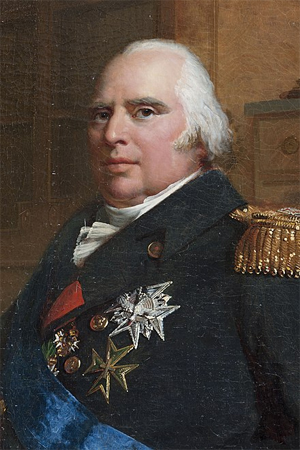
Louis XVIII (1755–1824) with the Order of Saint Lazarus grand cross
Main article: Royal Military and Hospitaller Order of Our Lady of Mount Carmel and Saint Lazarus of Jerusalem united
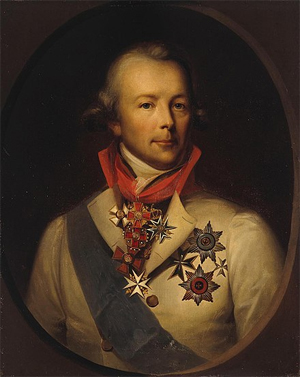
Peter Ludwig von der Pahlen (1745–1826) with the Order of Saint Lazarus knight cross

Russian General Alexander Suvorov (1730-1800) with the Order of Saint Lazarus knight cross
In 1604, Henry IV of France re-declared the French branch of the order a protectorate of the French Crown. King Henry IV founded in 1608, with the approbation of Pope Paul V, the Order of Notre-Dame du Mont-Carmel. He then, in turn, united to this new order the possessions of St. Lazarus in France, and such is the origin of the title Ordres Royaux, Militaires & Hospitaliers de Saint Lazare de Jérusalem & de Notre-Dame du Mont-Carmel réunis ("Royal, Military, and Hospitaller Orders of Our Lady of Mount Carmel and St. Lazarus of Jerusalem united"). This amalgamation eventually received formal canonical acceptance on 5 June 1668 by a bull issued by Cardinal Legate de Vendôme under Papal authority of Clement IX.
Unlike the situation with the Savoyian Order of Saints Maurice and Lazarus where a complete merger took place creating one order, the French branch was not completely merged with the Order of Our Lady of Mount Carmel, and the orders were managed as two separate entities, with individuals being admitted to one order but not necessarily to both.[16]
During the French Revolution, a decree of 30 July 1791 suppressed all royal and knightly orders in France. Another decree the following year confiscated all the Order's properties. The Holy See, which had originally created the Order, on the other hand did not suppress the order;[citation needed] while Louis, Count of Provence, then Grand Master of the order, who later became Louis XVIII, continued to function in exile and continued admitting various dignitaries to the order.[17]
Scholars differ in their views regarding the extent to which the Order remained active during and after the French Revolution. There is however no doubt of its continuing existence during this time. In different museums, there are preserved a number of paintings of Russian and Baltic nobles, admitted to the order after 1791. In this list are general John Lamb, Prince Suvorov, count Pahlen, count Sievers etc. Some of the new knights are listed in Almanach Royal from 1814 to 1830. King Louis XVIII, the order's protector, and the duc de Châtre, the order's lieutenant-general, both died in 1824. In 1830, a royal decree caused the order to lose its royal protection in France.
See also
• Christianity portal
• War portal
• Grand Masters of the Order of Saint Lazarus
Successors
• Order of Saints Maurice and Lazarus
• Royal Military and Hospitaller Order of Our Lady of Mount Carmel and Saint Lazarus of Jerusalem united
In popular culture
• The Order of Saint Lazarus is depicted in season two of the television series Knightfall.
• A fictionalized version of the Order is depicted in the television series A Discovery of Witches.
References
1. Savona-Ventura, Charles (October 2008). "The Order of St Lazarus in the Kingdom of Jerusalem". Journal of the Monastic Military Orders. 1: 55–64.
2. Bellesheim, Alphons (1887). History of the Catholic Church of Scotland: From the Introduction of Christianity to the Present Day. Blackwood. Lazarists. David likewise established at Harehope the military order of St Lazarus of Jerusalem, which had another house at Linlithgow.
3. Wise, Terence (2012). Knights of Christ. Bloomsbury Publishing. ISBN 9781780966427. The new Order had its own church and convent by 1142, and by 1147 was known as the Leper Brothers of Jerusalem. By 1155 the Order had houses in Tiberias and Ascalon, and later in Acre and possibly Caesarea and Beirut. By the mid-12th century the Order had also developed a force of military brethren, but they were never very numerous, and the Order remained principally preoccupied with the hospitaller role. A few non-leper brethren were included in the Order as knights, and leprous knights almost certainly took up arms when necessary. There were also lay brethren-sergeants, recruited from commoners suffering from leprosy.
4. Wise, Terence (2012). Knights of Christ. Bloomsbury Publishing. ISBN 9781780966427.
5. "Constitution of The Order". The Military and Hospitaller Order of Saint Lazarus of Jerusalem. 2015. Archived from the original on 29 June 2015. Retrieved 25 May 2015.
6. The Living Age, Volume 121. Littell and Gay Publishers. 1874. This ideas was not realized; but in 1572 the Lazarists were joined to the Order of St. Maurice of Savoy, and the two together constitute the present Italian Order of St. Maurice and St. Lazare.
7. Moeller, Charles. "The Military Orders." The Catholic Encyclopedia Vol. 10. New York: Robert Appleton Company, 1911. 22 Jun. 2015
8. "The Century Dictionary and Cyclopedia: Cyclopedia of names". Century Company. 1 January 1906 – via Google Books.
9. "Almanach Royal pour l'anné 1770-1830".
10. Takeda, Junko Thérese (2011). Between Crown and Commerce - Marseille and the Early Modern Mediterranean. Maryland, USA: Johns Hopkins University Press. p. 118.
11. Moeller, Charles. "Order of St. Lazarus of Jerusalem." The Catholic Encyclopedia Vol. 9. New York: Robert Appleton Company, 1910. 22 Jun. 2015
12. Savona-Ventura, Charles (October 2018). "A Hospitalis infirmorium Sancti Lazari de Jerusalem before the First Crusade". Acta Historiae Sancti Lazari Ordinis. 2: 13–26.
13. Porter, Whitworth (1871). Malta and Its Knights. Pardon and Son. p. 14.
14. Blackwood's Edinburgh Magazine, Volume CXV. The Leonard Scott Publishing Company. 1874. p. 494. There were four of each : the Hospitallers, the Templars, the Teutonic Knights, and the Lazarists in Palestine ; and the brotherhoods of Calatrava, Santiago, Alcantara, and Avis in the Peninsula. All these fraternities were established in order to help the weak and fight the Saracen; yet, nothwithstanding this general similarity of object, each of them had a special character of its own which distinguished it from the others.
15. Marcombe, D. (2003). Leper Knights: The Order of St. Lazarus of Jerusalem in England, 1150-1544. Woodridge: Boydell Press. ISBN 1-84383-067-1.
16. Grouvel, Robert. L'Ordre de Notre-Dame du Mont-Carmel et l'École Royale Militaire (1779-1787). Carney de La Sabretache, 1967, p.352-356.
17. Sainty, Guy Stair, ed. (2006) World Orders of Knighthood and Merit, p. 1862
Bibliography
• Bander van Duren, Peter (1995). Orders of Knighthood and of Merit-The Pontifical, Religious and Secularised Catholic-founded Orders and their relationship to the Apostolic See. XLV-XLVII. Buckinghamshire.
• Burgtorf, Jochen (2006). Alan V. Murray (ed.). "Siege of Acre, 1291". The Crusades: An Encyclopedia. Santa Barbara: ABC-CLIO. I. OCLC 70122512.
• Coutant de Saisseval, Guy (nd). Les Chevaliers de Saint Lazare de 1789 à 1930. Drukkerij Weimar by the Hague.
• Environ (1295), Constitution, règlements et nécrologie de Seedorf (Suisse).
• Marcombe, David (2003). Leper Knights. Boydell Press. ISBN 1-84383-067-1.
• Morris of Balgonie Ygr., Stuart H. (1986). The Insignia and Decorations of the Military and Hospitaller Order of Saint Lazarus of Jerusalem. Perthshire.
• Sainty (ed.), Guy Stair (2006). World Orders of Knighthood and Merit.
• Savona-Ventura, Charles (2014). The History of the Order of Saint Lazarus of Jerusalem. New York: Nova Publishers.
Further reading
• Belloy, Pierre de (1622) [1604]. De l'origine et institution des divers ordres de chevalerie tant ecclésiastiques que prophanes (2nd edition Toulouse ed.). Paris.
• Elphinstone, Francis (November 1962). The Opponents of St Lazarus which appeared. The Armorial. III. Edinburgh.
• de Sibert, Gautier (1772). History of The Military and Hospitaller Order of Saint Lazarus of Jerusalem. Paris.
• Military History Online - Order of St.Lazarus in the Latin East
• Seward, Desmond (1995). The Monks of War: The Military Religious Orders. London: Penguin Group.
• Bander van Buren, Peter (1995). "The Military and Hospitaller Order of Saint Lazarus of Jerusalem from the book: Orders of Knighthood and Merit: The Pontifical, Religious and Secularised Catholic-founded Orders and their relationship to the Apostolic See". Gerrards Cross: Colin Smythe. Archived from the original on 2011-07-21. Retrieved 2007-05-18.
External links
• Wikisource: "Order of St Lazarus of Jerusalem". Catholic Encyclopaedia (1913)

